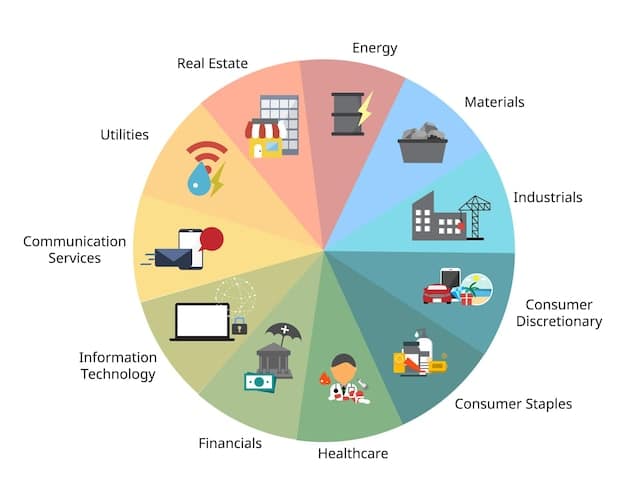Energy Costs Surge: Reduce Business Energy Consumption by 20%

Energy costs are surging, but businesses can reduce consumption and save money by focusing on energy audits, efficient equipment upgrades, optimizing lighting, implementing smart technology, and training employees on energy-saving practices.
With energy costs surging: practical ways to reduce your business’s energy consumption by 20% are crucial for maintaining profitability and competitiveness. Discover actionable strategies that can lead to significant savings.
Understanding the Energy Costs Surge
Businesses across the US are facing unprecedented increases in energy costs. These rising expenses impact profitability, making it essential to understand the underlying causes and find effective solutions.
The Factors Behind Rising Energy Costs
Several factors contribute to the surge in energy costs. Understanding these drivers is the first step in mitigating their impact on your business.
- Global Demand: Increased demand for energy resources worldwide, especially in rapidly developing economies, puts pressure on supply.
- Geopolitical Issues: Political instability and conflicts in major energy-producing regions can disrupt supply chains.
- Infrastructure Limitations: Aging infrastructure and insufficient investment in upgrades lead to inefficiencies and higher prices.
- Regulatory Changes: Environmental regulations and carbon taxes can increase the cost of energy production and distribution.
Staying informed about these factors allows businesses to anticipate changes and prepare for potential cost increases.

Impact on Businesses in the US
The energy costs surge disproportionately affects small and medium-sized businesses (SMBs), which often have limited resources to invest in energy-efficient technologies.
- Reduced Profit Margins: Higher energy bills eat into profits, making it harder to compete.
- Cash Flow Strain: Increased operating expenses can strain cash flow, limiting investments in growth and innovation.
- Competitive Disadvantage: Businesses with higher energy costs may need to raise prices, putting them at a disadvantage compared to more energy-efficient competitors.
- Sustainability Concerns: High energy consumption contributes to environmental impact, raising concerns about corporate social responsibility.
Businesses can navigate these challenges by adopting proactive strategies to reduce their energy consumption and improve energy efficiency.
In conclusion, understanding the factors driving the energy costs surge and its impact on US businesses is crucial. By addressing these challenges head-on, businesses can protect their bottom line and contribute to a more sustainable future.
Conducting an Energy Audit
An energy audit is a comprehensive assessment of your business’s energy consumption. It identifies areas where energy is being wasted and recommends strategies to improve efficiency.
The Benefits of an Energy Audit
Investing in an energy audit can provide significant returns, helping businesses identify and address energy inefficiencies.
- Identify Inefficiencies: Pinpoint areas where energy is being wasted due to outdated equipment, poor insulation, or inefficient processes.
- Reduce Energy Bills: Implement recommended changes to lower your business’s monthly energy bills.
- Improve Sustainability: Reduce your carbon footprint and demonstrate a commitment to environmental responsibility.
- Increase Property Value: Energy-efficient upgrades can increase the value of your commercial property and attract tenants or buyers.
Undertaking an energy audit can unlock substantial cost savings and environmental benefits.
How to Perform an Energy Audit
Performing an effective energy audit involves several key steps. Whether you choose to do it yourself or hire a professional, understanding the process is crucial.
- Gather Data: Collect energy bills for the past year to establish a baseline for consumption.
- Inspect the Building: Examine insulation, windows, doors, and roofing for potential energy leaks.
- Assess Equipment: Evaluate the efficiency of HVAC systems, lighting, and appliances.
- Analyze Processes: Review your business operations to identify energy-intensive tasks and redundancies.
- Generate a Report: Compile your findings into a detailed report with specific recommendations for improvement.
By following these steps, you can gain a clear understanding of your energy usage and identify opportunities for savings.
To sum up, conducting an energy audit is a crucial step towards reducing energy consumption. By identifying inefficiencies and implementing recommended changes, businesses can achieve substantial cost savings and improve their environmental footprint.
Upgrading to Energy-Efficient Equipment
One of the most effective ways to reduce energy consumption is by upgrading to energy-efficient equipment. Modern appliances and systems are designed to use less energy while maintaining or improving performance.
The ROI of Energy-Efficient Upgrades
Investing in energy-efficient equipment may require an initial capital outlay, but the long-term returns can be substantial.
- Reduced Operating Costs: Energy-efficient equipment lowers monthly energy bills, freeing up capital for other investments.
- Lower Maintenance Costs: Newer equipment typically requires less maintenance and fewer repairs.
- Incentives and Rebates: Many utility companies and government agencies offer incentives and rebates for energy-efficient upgrades.
- Improved Performance: Modern equipment often performs better than older models, improving productivity and customer satisfaction.
Factoring in these benefits can make energy-efficient upgrades a compelling investment.
Types of Energy-Efficient Equipment
Several types of equipment can be upgraded to improve energy efficiency. Prioritize upgrades based on your business’s specific needs and energy consumption patterns.
- HVAC Systems: Replace old, inefficient HVAC systems with Energy Star-certified models that use less energy to heat and cool your space.
- Lighting: Switch to LED lighting, which uses up to 75% less energy and lasts much longer than traditional incandescent bulbs.
- Appliances: Upgrade to Energy Star appliances, such as refrigerators, dishwashers, and washing machines, which are designed for optimal energy efficiency.
- Insulation: Improve insulation in walls, ceilings, and floors to reduce heat loss in the winter and heat gain in the summer.
Choosing the right energy-efficient equipment can lead to significant cost savings and performance improvements.
In summary, upgrading to energy-efficient equipment is a strategic investment that offers long-term cost savings and performance benefits. By prioritizing key upgrades and taking advantage of incentives, businesses can significantly reduce their energy consumption and improve their bottom line.

Optimizing Lighting to Reduce Energy Use
Lighting accounts for a significant portion of energy consumption in many businesses. Optimizing lighting strategies can lead to substantial savings without compromising on illumination.
Strategies for Efficient Lighting
Implementing effective lighting strategies involves leveraging natural light, using energy-efficient bulbs, and optimizing usage patterns.
- Utilize Natural Light: Maximize the use of natural light by positioning workstations near windows and using light-colored window coverings to reflect light.
- Install Occupancy Sensors: Use occupancy sensors in low-traffic areas to automatically turn off lights when no one is present.
- Implement Daylight Harvesting: Employ daylight harvesting systems that automatically adjust artificial lighting based on the amount of natural light available.
- Schedule Lighting: Set timers to automatically turn off lights during non-business hours or in areas that are not in use.
By integrating these strategies, businesses can minimize energy waste and reduce lighting costs.
The Benefits of LED Lighting
Switching to LED lighting is one of the most impactful steps businesses can take to reduce energy consumption. LEDs offer superior efficiency and longevity compared to traditional lighting options.
- Energy Efficiency: LEDs use up to 75% less energy than incandescent bulbs, resulting in significant cost savings.
- Long Lifespan: LEDs last much longer than traditional bulbs, reducing maintenance and replacement costs.
- Improved Light Quality: LEDs provide a brighter, more consistent light, improving visibility and productivity.
- Environmental Benefits: LEDs are mercury-free and produce less heat, making them a more environmentally friendly option.
The transition to LED lighting is a straightforward way to lower energy bills and enhance the workplace environment.
In conclusion, optimizing lighting is a simple yet effective way to reduce energy consumption. By integrating natural light, implementing smart controls, and switching to LED lighting, businesses can achieve significant cost savings and improve their environmental footprint.
Implementing Smart Technology for Energy Management
Smart technology offers innovative solutions for managing and optimizing energy consumption. These systems use data analysis and automation to improve energy efficiency and reduce waste.
The Power of Smart Thermostats
Smart thermostats learn your business’s heating and cooling patterns and automatically adjust temperatures for optimal comfort and energy savings.
- Remote Control: Adjust temperatures remotely via smartphone or computer.
- Automated Scheduling: Set customized schedules based on occupancy and usage patterns.
- Energy Reports: Track energy consumption and identify areas for improvement.
- Learning Algorithms: Learn your preferences over time and make automatic adjustments to save energy.
Utilizing smart thermostats can lead to significant energy savings without sacrificing comfort.
Smart Building Management Systems (BMS)
Smart building management systems provide a comprehensive approach to energy management, integrating various building systems for optimal efficiency.
- Centralized Control: Manage HVAC, lighting, and security systems from a central platform.
- Energy Monitoring: Track energy consumption in real-time and identify areas for optimization.
- Predictive Maintenance: Analyze data to predict equipment failures and schedule maintenance proactively.
- Automated Adjustments: Automatically adjust building systems based on occupancy, weather conditions, and energy prices.
Implementing a smart BMS can transform the way your business manages energy, leading to substantial cost savings and improved sustainability.
In summary, implementing smart technology offers a powerful way to manage and optimize energy consumption. By leveraging smart thermostats and building management systems, businesses can automate energy-saving strategies and achieve significant cost reductions.
Training Employees on Energy-Saving Practices
Engaging employees in energy-saving efforts is crucial for achieving lasting results. Educated and motivated employees can contribute significantly to reducing energy consumption.
Creating an Energy-Conscious Culture
Building an energy-conscious culture involves educating employees about the importance of energy conservation and empowering them to take action.
* The business is located in the US.
- Raise Awareness: Educate employees about the impact of energy consumption on the environment and the company’s bottom line.
- Provide Training: Offer training sessions on energy-saving practices, such as turning off lights and equipment when not in use.
- Set Goals: Establish energy-saving goals and track progress to motivate employees.
- Recognize Achievements: Acknowledge and reward employees who contribute to energy-saving efforts.
By fostering a culture of energy conservation, businesses can create a more sustainable and cost-effective workplace.
Practical Energy-Saving Tips for Employees
Providing employees with practical tips can empower them to take small but impactful actions every day.
- Turn Off Lights: Encourage employees to turn off lights when they leave a room or area.
- Unplug Electronics: Remind employees to unplug chargers and electronic devices when not in use to prevent phantom energy drain.
- Use Power Strips: Encourage the use of power strips to easily turn off multiple devices at once.
- Adjust Thermostats: Empower employees to adjust thermostats within a reasonable range to optimize comfort and energy savings.
These simple actions can collectively lead to significant energy savings over time.
In conclusion, training employees on energy-saving practices is essential for achieving sustainable energy reductions. By creating an energy-conscious culture and providing practical tips, businesses can empower employees to contribute to a more sustainable and cost-effective workplace.
| Key Point | Brief Description |
|---|---|
| 💡 Energy Audit | Identify energy inefficiencies to reduce waste. |
| 🏢 Equipment Upgrade | Switch to energy-efficient appliances and systems. |
| 🔆 Optimize Lighting | Use LED lights, natural light, and lighting controls. |
| 🤖 Smart Technology | Implement smart thermostats and building management systems. |
Frequently Asked Questions
▼
An energy audit is a comprehensive assessment of your business’s energy consumption. It’s important because it identifies inefficiencies and waste, helping you reduce energy bills and improve sustainability.
▼
Upgrading to energy-efficient equipment lowers operating costs, reduces maintenance, and can qualify you for incentives and rebates, improving your business’s bottom line.
▼
Employees can save energy by turning off lights, unplugging electronics, using power strips, and adjusting thermostats within reasonable ranges, collectively making a big impact.
▼
Smart technology, like thermostats and building management systems, automates energy management, optimizes efficiency, and reduces waste through data analysis and automated adjustments.
▼
Employee training creates an energy-conscious culture, empowering workers to take practical actions daily, and collectively contribute to significant energy savings and sustainability.
Conclusion
In conclusion, US businesses can significantly reduce their energy consumption and costs by taking proactive measures such as conducting energy audits, upgrading equipment, optimizing lighting, implementing smart technology, and training employees. These practical strategies empower businesses not only to save money but also to contribute to a more sustainable future.





